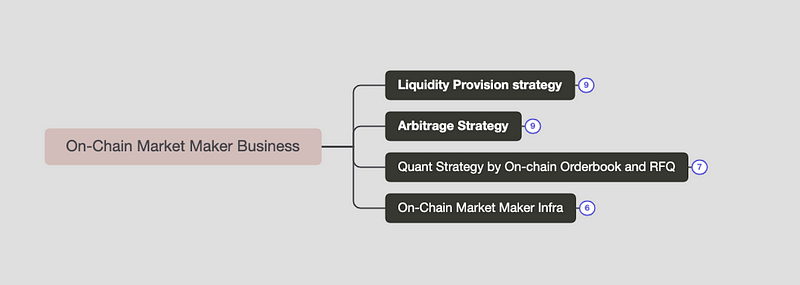
This series is for an introduction to on-chain market maker research and business analysis.
Part1 is A Mathematical View of Automated Market Maker (AMM) Algorithms and Its Future
Part 3 is An overview of On-Chain Market Maker Strategy and Business.
Updating…

In this paper, we provide an overview of the on-chain market maker business and introduce the on-chain strategy through mathematical and engineering perspectives. In contrast to traditional market makers on centralized finance platforms, the on-chain market maker business significantly differs in terms of fund size, PnL function, volatility modeling, derivative strategy, and arbitrage. Finally, we propose some effective suggestions for new on-chain market makers.
Enables market makers to seamlessly flow into DeFi liquidity.
The recent collapse of Alamend Research and FTX highlights the power of decentralization philosophy in the DEX and DeFi space. However, it's worth noting that the liquidity size is still largely controlled by CEX. To shift the balance of price power towards DEX from CEX, we need to focus on building infrastructure for traditional market makers, which would support an "on-chain Alamenda Research" in DEX.
Running an arbitrage strategy on ETH has become highly competitive due to the existence of MEV. Let's take a look at two on-chain arbitrage examples.
The first successful arbitrage is within one transaction hash. The red part in the picture shows a profit of 0.8526 ETH ($1,408). It's a basic arbitrage strategy where the arbitrage space is from the trading router.

To calculate the profit,